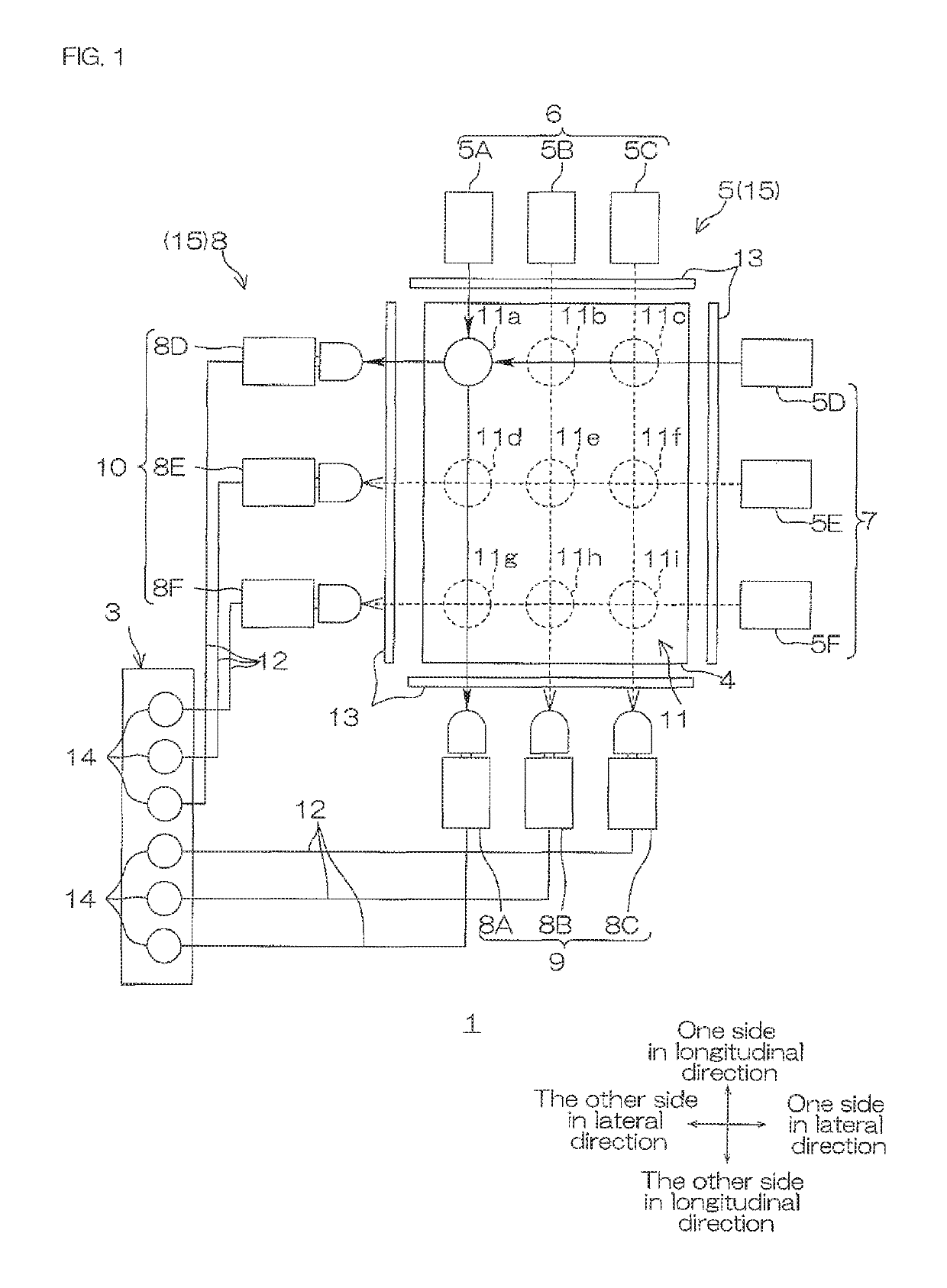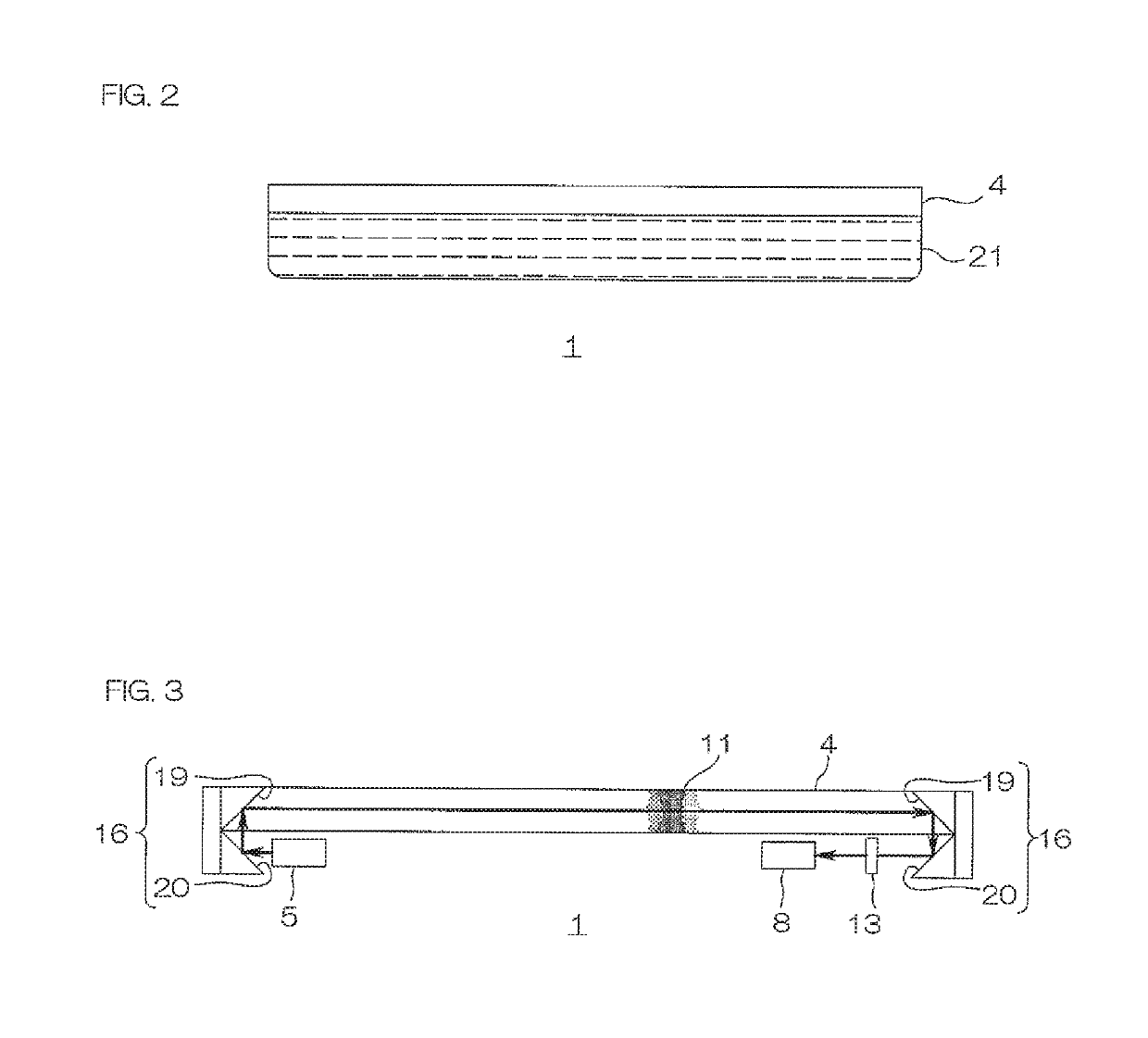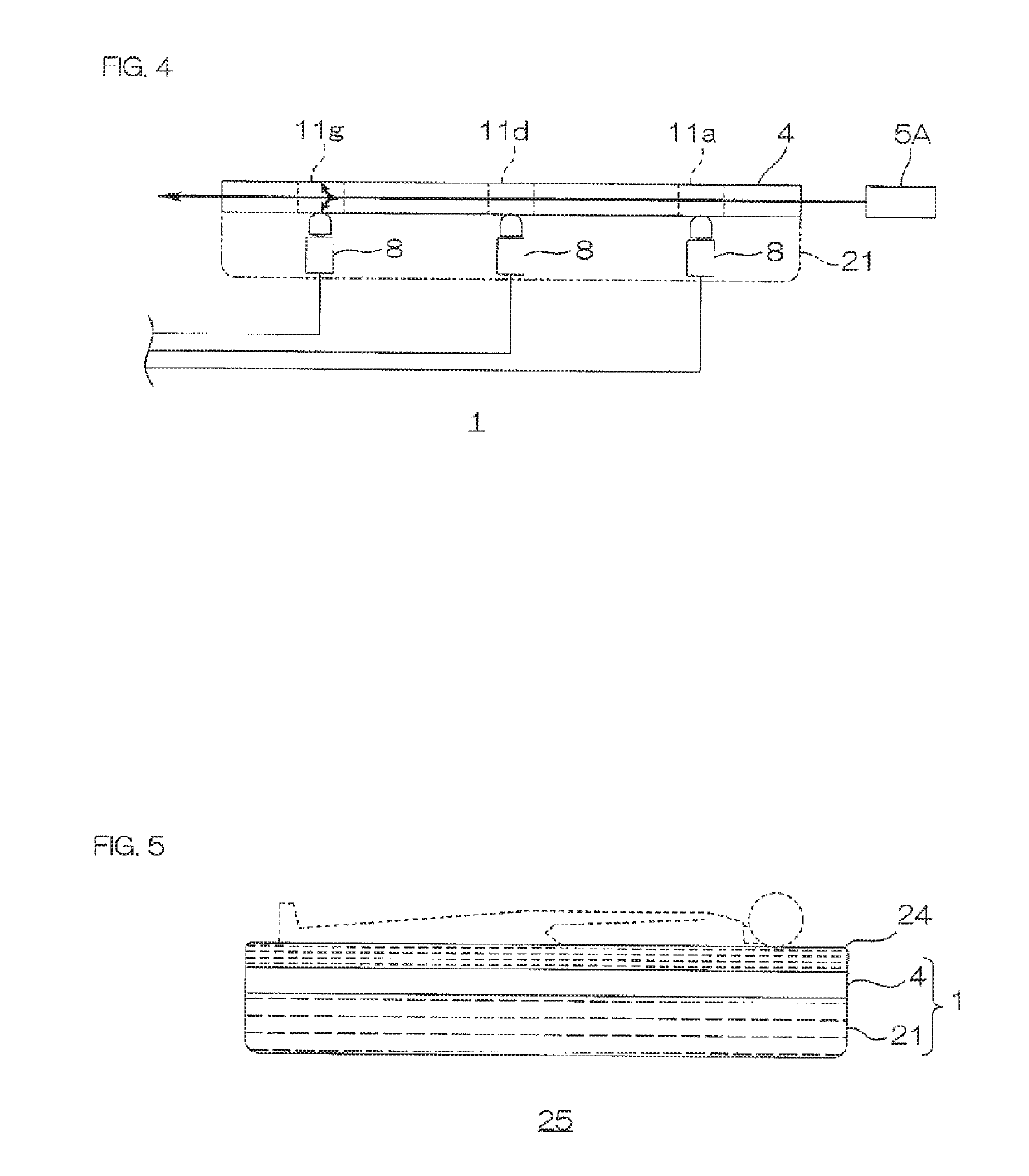Cushioning material having sensor, and bed
a technology of cushioning material and sensor, which is applied in the direction of instruments, sofas, and force measurement by measuring optical property variation, can solve problems such as bedsores, and achieve the effect of easy and precise detection of pressur
- Summary
- Abstract
- Description
- Claims
- Application Information
AI Technical Summary
Benefits of technology
Problems solved by technology
Method used
Image
Examples
reference example 1 (
Production of Resin Sheet 1)
[0312]A glass-made flask was charged with 100 parts by mass of polytetramethylene ether glycol (Hodogaya Chemical Co., Ltd., PTG-650SN, hydroxyl number 174.9 mgKOH / g), and 1 part by mass of an antioxidant, the mixture was dried under reduced pressure at 120° C. for 2 hours, and the pressure was set back to normal pressure with nitrogen. Then, while stirring, 2.25 parts by mass of 1,3-propanediol and 0.6875 parts by mass of 1,2,6-hexanetriol were added, and the temperature was increased to 70° C. Then, a few drops of an antifoaming agent were added, and 48.75 parts by mass of 4,4′-diphenylmethane diisocyanate (Mitsui Chemicals, MDI-PH) melted at 70° C. was added therein, and the mixture was stirred. Thereafter, defoaming was conducted under reduced pressure for 30 seconds, and the pressure was set back to normal pressure with nitrogen. Thereafter, it was poured into a mold from the flask, and curing was conducted at 70° C. for 18 hours, thereby producing a...
reference example 2 (
Production of Resin Sheet 2)
[0314]A glass-made flask was charged with 100 parts by mass of polytetramethylene ether glycol (Hodogaya Chemical Co., Ltd., PTG-650SN, hydroxyl number 174.9 mgKOH / g), and 1 part by mass of an antioxidant, the mixture was dried under reduced pressure at 120° C. for 2 hours, and the pressure was set back to normal pressure with nitrogen. Then, while stirring, 2.29 parts by mass of 1,3-propanediol and 0.7 parts by mass of 1,2,6-hexanetriol were added, and the temperature was increased to 70° C. Then, a few drops of an antifoaming agent were added, and 50.85 parts by mass of 4,4′-diphenylmethane diisocyanate (Mitsui Chemicals, MDI-PH) melted at 70° C. and 10 parts by mass of 4-cyano-4′-pentylbiphenyl (5CB) were added therein, and the mixture was stirred. Thereafter, defoaming was conducted under reduced pressure for 30 seconds, and the pressure was set back to normal pressure with nitrogen. Thereafter, it was poured into a mold from the flask, and curing was...
reference example 3 (
Production of Resin Sheet 3)
[0316]A glass-made flask was charged with 100 parts by mass of polytetramethylene ether glycol (Hodogaya Chemical Co., Ltd., PTG-650SN, hydroxyl number 174.9 mgKOH / g), and 1 part by mass of an antioxidant, the mixture was dried under reduced pressure at 120° C. for 2 hours, and the pressure was set back to normal pressure with nitrogen. Then, 0.7 parts by mass of 1,2,6-hexanetriol was added, and the temperature was increased to 70° C. Then, a few drops of an antifoaming agent were added, and 43 parts by mass of 4,4′-diphenylmethane diisocyanate (Mitsui Chemicals, MDI-PH) melted at 70° C., and 10 parts by mass of 4-pentylbiphenyl were added therein, and the mixture was stirred. Thereafter, defoaming was conducted under reduced pressure for 30 seconds, and the pressure was set back to normal pressure with nitrogen. Thereafter, it was poured into a mold from the flask, and curing was conducted at 70° C. for 18 hours, thereby producing a resin sheet (molded a...
PUM
| Property | Measurement | Unit |
|---|---|---|
| glass transition temperature | aaaaa | aaaaa |
| Young's modulus | aaaaa | aaaaa |
| Young's modulus | aaaaa | aaaaa |
Abstract
Description
Claims
Application Information
 Login to View More
Login to View More - R&D
- Intellectual Property
- Life Sciences
- Materials
- Tech Scout
- Unparalleled Data Quality
- Higher Quality Content
- 60% Fewer Hallucinations
Browse by: Latest US Patents, China's latest patents, Technical Efficacy Thesaurus, Application Domain, Technology Topic, Popular Technical Reports.
© 2025 PatSnap. All rights reserved.Legal|Privacy policy|Modern Slavery Act Transparency Statement|Sitemap|About US| Contact US: help@patsnap.com



